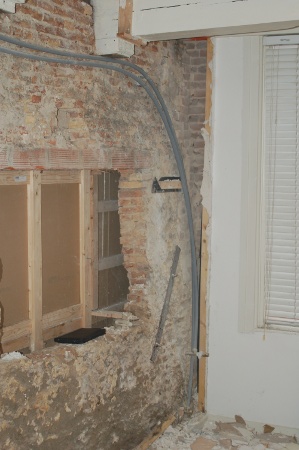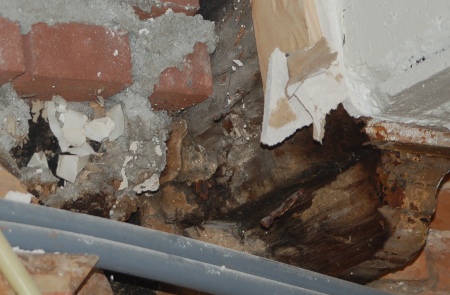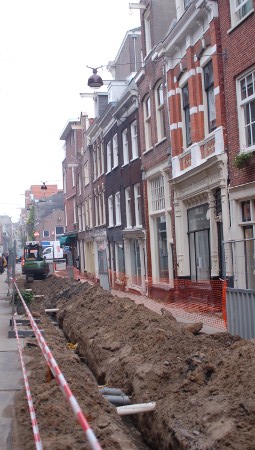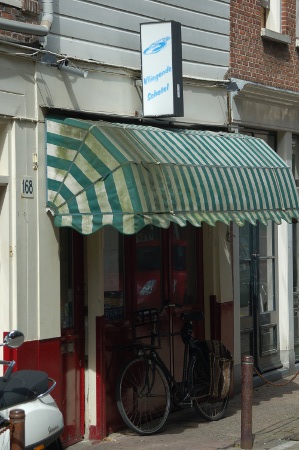Expats coming to the Netherlands, beware!
The city of Amsterdam recently launched a new ‘brand’, called I Amsterdam.
This is a registered trademark of the city, and is supposedly used for companies or other organizations that present the city in a good light. In particular an important part of the marketing efforts are to attract so-called knowledge workers to the city, and help with their relocation by promoting businesses that can assist them with things like housing, banking and the like.
Beware of Racism!
An important part of the history of the Netherlands is after WWII a large number of migrants came here to help with the reconstruction of the country. These migrants kept coming, and in recent times turned into more educated knowledge workers. In fact, in light of the fact there were large numbers of knowledge workers the governments has significantly cut back on educational spending and let immigrants fill the gaps, causing other problems I won’t get into here.
The view has always been maintained that those coming to the country are doing so to serve the native Dutch and their descendants. In other words, knowledge workers come here to create jobs, and these jobs are for ethnic Dutch.
The demographics are now such that about half the city’s population is not ethnic Dutch, and if you move here you will also not be ethnic Dutch.
There’s a long running custom for ethnic Dutch to only hire or offer promotions to other ethnic Dutch. In fact, to hire or promote someone who is not ethnic Dutch is considered to be taking a risk. This might create discontent in the workplace, a clash of cultures or attract complaints from customers — much in the same way it used to be with black workers in America.
There is no such thing as affirmative action or reverse discrimination here, and certainly not in the city government! The vast majority of city workers are ethnic Dutch, and nearly all of those in positions of importance are. Most city contracts go to companies who only hire ethnic Dutch. Certainly for the purposes of this new marketing logo, if you do business with the companies involved, you will see they are almost all exclusively staffed with ethnic Dutch.
If you do business with them, you will be leaving out the half of the city that is not ethnic Dutch.
Housing
This is a good example, and since I am not ethnic Dutch and am offering an apartment for rent, let me explain a little bit how this works.
Largely speaking, there are three kinds of housing in Amsterdam. There’s social housing, where you have to meet certain income, employment and pre-existing residence requirements. There’s free sector housing, which is more expensive and easier to find. Now there’s this new category called Short-Stay housing, especially intended for expats.
There’s lots of grey areas in housing, for example people who have social housing illegally subletting it to expats for a huge profit, or landlords illegally renting out social housing as free sector. Lots of people will warn expats about ‘illegal’ housing, but actually there’s nothing to worry about. There are no penalties for you to rent and live in illegal housing. The risks are almost exclusively for property owners. If you find yourself in the wrong kind of accommodation, you may have to move out eventually or pay a higher than expected rent, you might find yourself swamped with a bit of red tape, but there are no other risks.
The one issue for some is if you are non-EU and living here on a residence permit renewed on an annual basis, you will need to register your residence with the city and be allowed to live wherever that is. This is easy. If you fall into this situation, ask your potential landlord if you’re allowed to register? If the answer is no, you have to look elsewhere. Your landlord will not want you to try to register if you’re not allowed to, and it will create a lot of problems for them if you do. If you aren’t required to register because of a residence permit, it’s no problem to come to an agreement that you won’t register, if this is what you want to do.
There is nothing illegal about renting an apartment from me or any other private party! Most places are okay to register with the city. If you rent from me, you can certainly register if you want, no problem.
Short Stay housing was created because there are a lot of empty apartments in the city now that don’t meet the requirements of free sector rental housing, and can’t be sold because the real estate market is too depressed. Licenses were granted to large housing corporations to use this excess housing as ‘Short Stay’ housing, in limited numbers so the market would not fill up with expat rentals, bringing prices down. These licenses were granted ‘per unit’, with entire apartment blocks considered as a single unit, meaning the cost for someone like me with a single apartment was unrealistic, and only pre-existing housing corporations would qualify.
If you move into an official ‘Short Stay’ rental, you will get housing licensed by a city government dominated by ethnic Dutch, with the intention of keeping it in short supply in an otherwise flooded real estate market with artificially high rents, as well as with the intention of benefiting ethnic Dutch owners running a company who only hires ethnic Dutch workers.
This isn’t the right kind of housing for expats!
Whatever you do, and however you find housing, the best thing to do is avoid official Short Stay housing and official housing companies. If you’re looking for housing, leave a comment on this post and I’ll try to offer the most current advice I have at the moment.
Work Ethic
One of the things that happens with the active promotion of ethnic Dutch is one of the most atrocious work ethics I have ever seen. Nothing is a better example than when the city was licensing taxis in a similar way as the new Short Stay housing! By searching on TCA or Taxi Centrale Amsterdam, there are probably lots of stories on the Internet, but basically the city turned all of their taxi drivers into thugs.
The taxi drivers all knew they had a right to drive their taxi, pretty much charge whatever they wanted and could do what they wanted because the city had given them a permanent license and weren’t issuing new licenses to others. This basically meant they were ripping off any tourist who entered their cabs, charging whatever they wanted, and many became involved in organized crime. For a time it was known if you wanted pirated software, you could buy a CD from most taxi drivers. Many would transport drugs on request. It was a real mess, and it took a long time to sort out. Nowadays, the taxis aren’t nearly as bad, certainly nothing to be afraid of, but there are still a few bad drivers floating around and taxis are still best avoided if possible.
Later I’m going to do a post on my recent house renovations, and the story is similar with this.
Any time you do business with a completely ethnic Dutch company, you risk the same sort of work ethic and desire to charge the highest price for the least amount of work. By the way, this is often the case with ethnic Dutch people trying to buy goods and services too. Since employment is harder to come by for non-ethnic Dutch, as a rule they are much more motivated and honest.
I’m not in anyway encouraging anyone to discriminate the other way, and refuse to do business with ethnic Dutch, but rather use common sense.
If you’re an expat coming to Amsterdam, beware half of the city is like you — from somewhere else. Look out for and pay attention to them! Look for colored skin, a funny accent or native English speaker. The day will come where you expect the same from others.
If you come here and work for a foreign company, it may take a long time before you notice it, because you’ll be working in a pretty sheltered environment. It’s also normal when you come here to look on everything with a positive light, and for example justify this kind of discrimination on the basis of a lack of appropriate language skills. The truth is with something like language skills, the expectations are generally just so high, that no non-native speaker is good enough. Almost no one learns to speak Dutch as a second language without an accent. It can take a long time living here before you see just how undeniable the discrimination is, but you’ll see it eventually.
A desire to purchase goods and services from non-ethnic Dutch is really the most important first step to ending the discrimination that goes on here.








